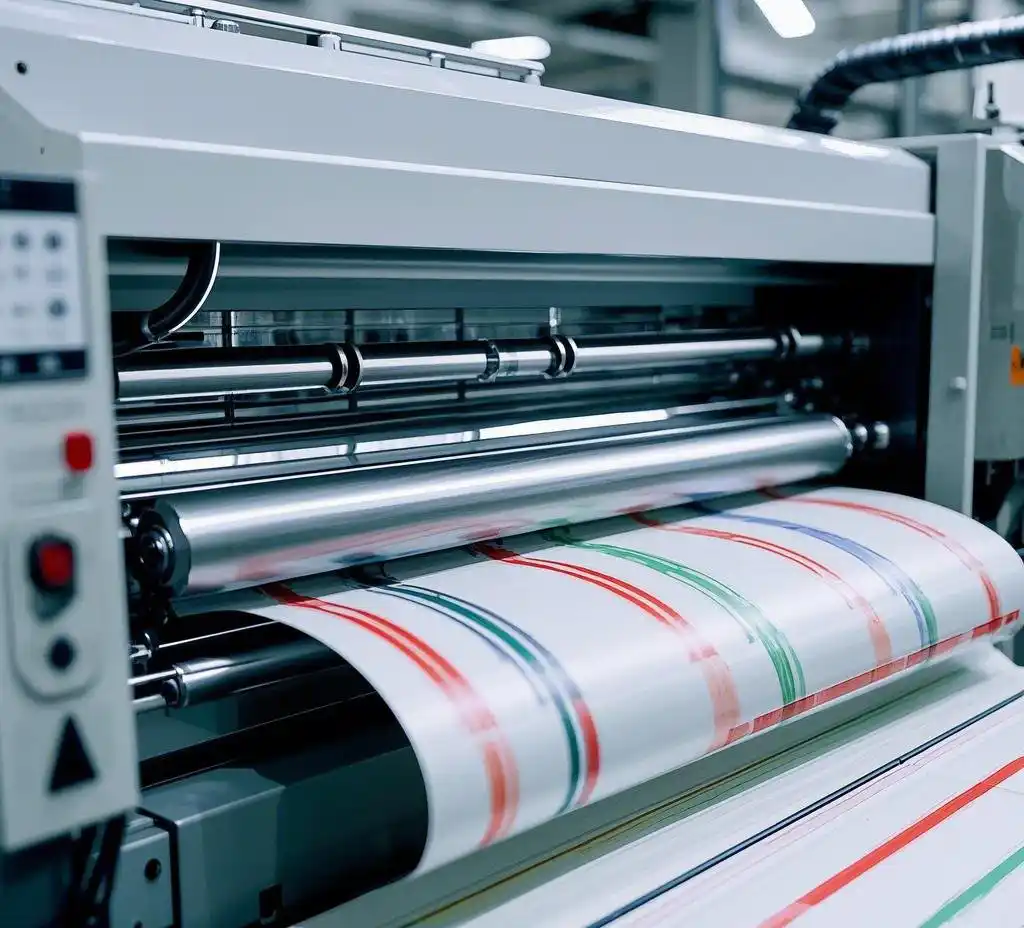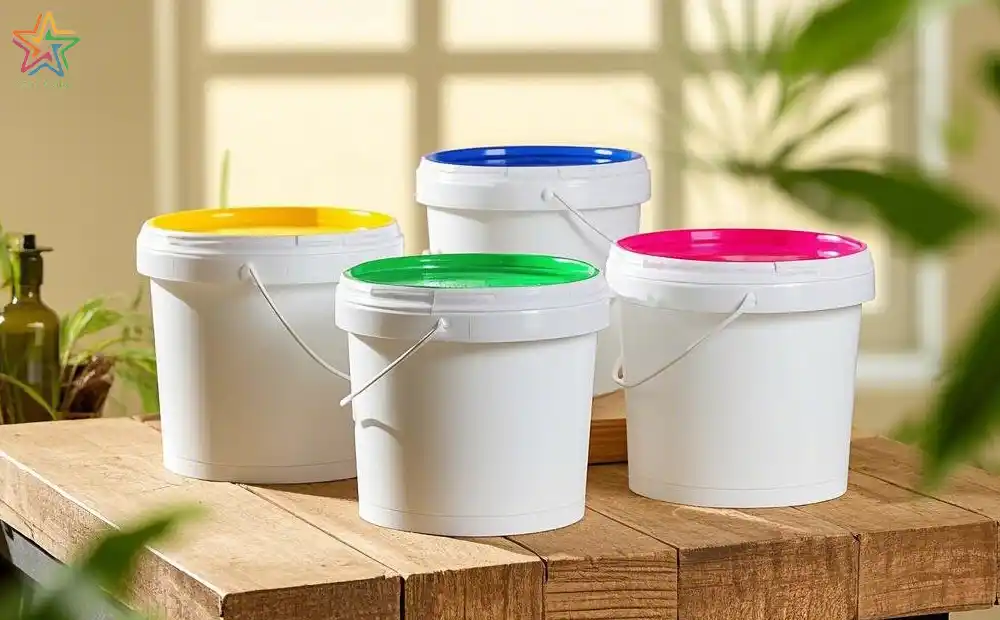How to control the color difference in gravure printing
Date: May 08 2025 From: Star Color Views:
In gravure printing, color difference control is a core indicator determining product quality. As industries such as luxury goods, food, and pharmaceuticals demand increasingly consistent packaging visuals, color management in gravure printing has shifted from "visually acceptable" to "data-driven precision control."
1. Color Difference Grades and Tolerance Standards
Color difference, a key parameter for printing quality, has distinct acceptable ranges based on application scenarios:
| Color Difference Type |
ΔE Range |
Application Scenarios |
International Standards |
| Imperceptible to Eye |
ΔE < 1.0 |
Luxury Packaging |
ISO 12647-2 |
| Commercially Acceptable |
1.0 ≤ ΔE ≤ 2.0 |
Food/Cosmetic Packaging |
G7 Master Standard |
| Requires Rework |
ΔE > 2.5 |
Industrial Labels |
GRACoL 2013 |
Detection Technology Upgrades:
- Offline Detection: Spectrophotometers with 0.08ΔE precision meet the stringent requirements of luxury packaging.
- Online Monitoring: Real-time scanning every 0.5 seconds, combined with AI algorithms to predict color difference trends.
- Three-Level Detection System: "Offline Calibration - Online Monitoring - Closed-Loop Feedback" ensures first-piece inspection pass rate ≥ 96%.

2. Root Causes and Solution Matrix for Color Difference
Pareto analysis reveals that 85% of color difference issues stem from fluctuations in four core factors, with targeted technical improvements enabling systematic optimization:
1. Ink System Stability (35% Impact)
- Core Issue: Traditional manual ink mixing causes color concentration fluctuations of ±5%, directly leading to ΔE variations.
- Solutions:
- Improve viscosity control precision from Zahn cup ±3 seconds to ±0.5 seconds.
- Introduce online pH electrodes to monitor ±0.05 pH fluctuations, preventing hue drift due to amine volatilization.
- Optimize formulations to control pigment particle size D50 ≤ 0.3μm, enhancing color paste stability.
2. Plate Cylinder Engraving Precision (28% Impact)
- Technical Bottleneck: Traditional electro-engraving machines have mesh depth variations of ±3μm, causing ink transfer rate fluctuations.
- Innovative Solutions:
- Adopt laser direct engraving technology for ±0.5μm depth control, improving transfer rate consistency to 98.7%.
- Build digital twin models for plate cylinders, pre-calibrating mesh volume via 3D scanning to ensure inter-batch color difference < 0.3ΔE.
3. Printing Pressure Uniformity (20% Impact)
- Process Pain Point: Mechanical pressure control leads to linear pressure fluctuations of ±4N/cm, causing uneven ink film thickness.
- Smart Upgrades:
- Install servo-closed pressure control systems to limit pressure fluctuations to ±0.5N/cm, with ink film thickness difference ≤ 0.08μm.
- Integrate pressure sensor matrices to map roller pressure distribution in real time, dynamically compensating for edge pressure differences via machine learning.
4. Drying Process Stability (12% Impact)
- Traditional Deficiency: Oven temperature fluctuations of ±8℃ result in inconsistent ink color development.
- Precision Control:
- Use multi-segment temperature control to limit fluctuations to ±1℃, with color density difference ≤ 0.03.
- Introduce process control systems to adjust drying curves dynamically based on ink solvent formulations.

3. Detailed Parameters for Ink Precision Control
1. Three Key Rheological Control Factors
| Control Item |
Traditional Process |
High-Precision Solution |
Process Capability (Cp) |
| Viscosity Control |
Zahn Cup ±3s |
Closed-Loop Rotational Viscometer ±0.5s |
≥1.67 |
| pH Value Management |
Test Paper ±0.5 |
Online Electrode ±0.05 |
≥2.0 |
| Temperature Stability |
±5℃ |
Dual-Circulation Thermostat ±0.3℃ |
≥1.33 |
2. Functional Additive Applications
- Dispersion Optimization: Nano-grinding processes reduce pigment particle size D50 ≤ 0.3μm, decreasing color difference fluctuations by 63% compared to traditional 0.8μm particles.
- Weather Resistance Enhancement: Adding stabilizers ensures ΔE < 2 after 300 hours of xenon light resistance testing, meeting 3-year color retention requirements for packaging.
4. Environmental Factor Control Standards and Implementation
1. Precision Temperature and Humidity Control
Environmental temperature and humidity directly impact ink drying speed, pigment molecular activity, and substrate physical properties, significantly affecting color difference:
- Temperature: Each 1℃ change causes ΔE ≈ 0.15. Maintain 23±1℃ with precision air conditioning (±0.5℃ control) to avoid inconsistent ink drying and color development.
- Humidity: Each 1%RH fluctuation causes ΔE ≈ 0.08. Stabilize at 55±3%RH using desiccant dehumidifiers (±1%RH control) to prevent ink viscosity changes and substrate deformation.
2. Cleanliness Management System
Dust particles in the printing environment cause uneven ink transfer and dot deformation, with a color difference impact coefficient of ΔE 0.3–0.5:
- Standards: Maintain Class 100,000 cleanliness using laminar flow hoods with HEPA filters (0.3μm particle filtration).
- Monitoring: Use Testo 480 environmental recorders and particle counters to monitor real-time temperature and dust levels, triggering alarms for out-of-range parameters.
5. Industry Benchmark Case
Case 1: High-End Chinese Liquor Label Printing (Moutai)
- Challenge: Ensuring ΔE <0.5 for bronzing and four-color overlay printing to maintain luxury brand consistency, while meeting ISO certification requirements.
- Solution:
- Deploy Heidelberg CPC 32 process control system for precise regulation of printing pressure and ink supply.
- Integrate CGS ORIS Color Tuner for end-to-end color management, from pre-press data processing to real-time printing adjustments.
- Outcome: Batch color difference stabilized at ΔE 0.3–0.4, exceeding industry standards and passing ISO 2846-1 certification. This enhanced brand reputation and set a benchmark for high-end packaging color control.
Conclusion
By establishing a full-process solution covering standards, root cause control, ink precision, environmental management, and practical cases, gravure color difference control has evolved from experience-driven to data-and-technology-driven intelligence. The 2023 technical solutions outlined here achieve a 98.5% pass rate for ΔE < 1.2 and build a foolproof control system via CIP4 workflows and online monitoring.
As AI and IoT technologies deepen their integration in printing, color difference control will advance toward higher precision and automation, driving quality upgrades and green transformation in the gravure industry. Enterprises can reference these technical parameters and implementation paths to tailor equipment upgrades and process optimizations, gaining a competitive edge through superior color consistency.
 RU
RU
 EN
EN
 CN
CN


